Cartoon Artist Roz Chast Draws with Needle and Thread
Embroidery brings color and texture to her humorous illustrations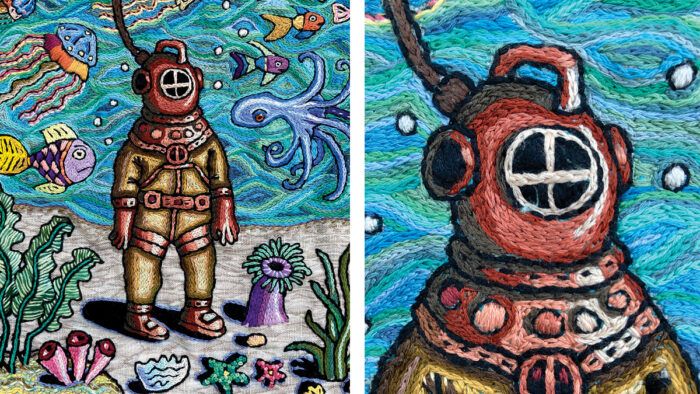
Roz Chast is best known for her pen-and-ink portrayals of nervy New Yorkers and the perpetually ill at ease. A cartoonist for The New Yorker for nearly half a century, she is also the writer and illustrator of more than 20 books, including Going Into Town: A Love Letter to New York (Bloomsbury USA, 2017) and the award-winning Can’t We Talk About Something More Pleasant? (Bloomsbury USA, 2014), a memoir about her parents’ final years.
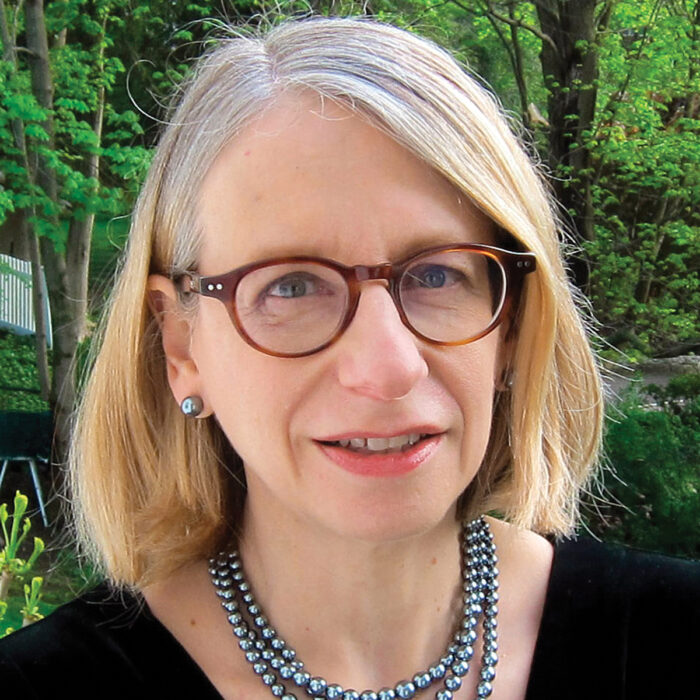
Chast, however, isn’t just an artist in pen and ink, but in needle and thread, specializing in embroidered tapestries. She has dabbled in rug hooking as well, and is an accomplished creater of ornate Ukrainian-style Easter eggs called pysanky. In each medium, her works document anxiety, insomnia, New York, the surreal, and the uncomfortably real: They’re of a piece with her cartoons—the same squiggly lines, the same schlubby characters. But the textured chainstitching and nuanced color work in her tapestries lend her images an unparalleled depth that makes them all the more impressive. Her narrative ideas seem as effortless on fabric as on paper, but the handwork involved in crafting the images is more fully apparent.
Chast’s embroideries were included in an exhibition at Carol Corey Fine Art, Kent, Connecticut, in 2021, as well as in a show at the Norman Rockwell Museum in Stockbridge, Massachusetts, in 2015. Appropriately, some of her embroidery work has appeared on the cover of The New Yorker. The artist spoke with Threads about her process, dreams, and her YouTube search history.
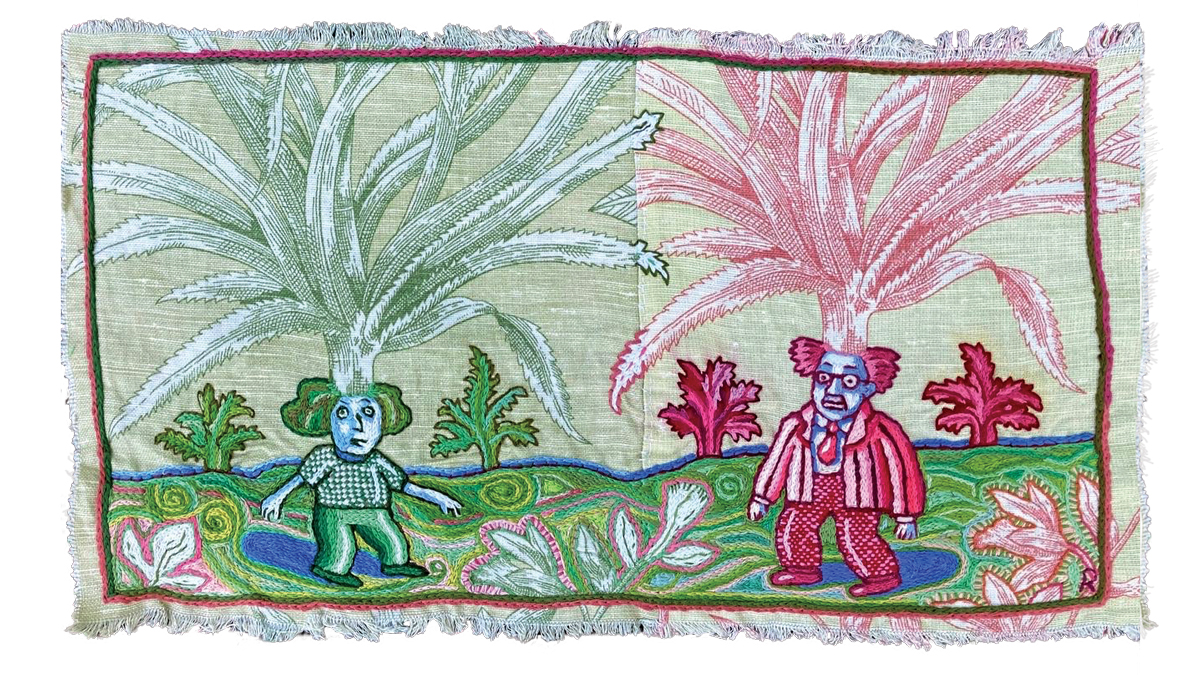
Krysten Chambrot: I read a Q&A with you in The New Yorker, where you said you learned to embroider in the sixth grade, in school. Did you immediately click with it as a medium?
Roz Chast: I liked it! I still remember we had to embroider a map of the United States, and I liked all the colors. And I liked the corn. The map was the main crops of the area; there’d be a little icon of the thing. I remember doing the little corn. I think the kernels were French knots, and I remember just thinking, “Oh, that’s pretty.”
KC: When you finished that, did you continue embroidering at home on your own?
RC: Not really, it was a one-off, but I still remembered it. And periodically, some craftsy thing would come up. I remember, in the ’70s, you’d embroider little doodads at the bottom of your bell-bottoms or something, so I could do that. And I knew the chainstitch. It’s just been this little thing in my life that I sort of knew how to do.
KC: Why did you return to embroidering tapestries?
RC: I like to experiment with different mediums, and some of them work better than others with my style. I’ve tried lithography, and, so far, it just doesn’t help me at all. We don’t click. But certain other things, like the pysanky eggs or embroidery, it felt like drawing. So I guess that was the thing, because it felt so much like drawing, and also it felt like doing cartoons in a certain way.
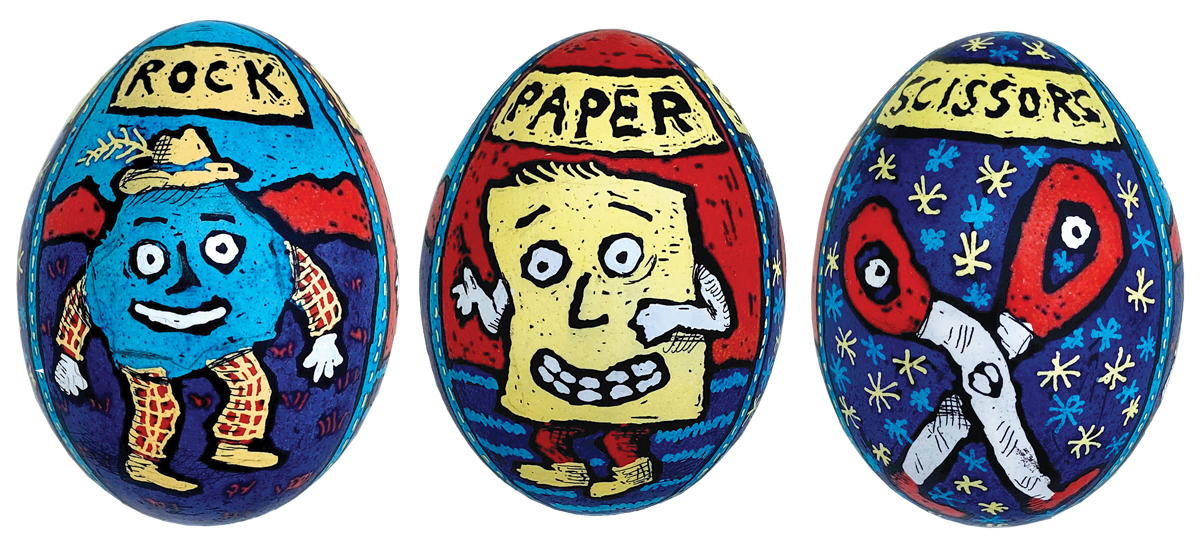
KC: You mentioned other mediums. Are you still doing some rug hooking?
RC: I haven’t done rug hooking in a while, and I actually haven’t done embroidery for a while because I’m working on a couple of projects right now. I’m working on a couple of books and a few things for The New Yorker.
KC: Are these books of your own?
RC: One of them is illustrating a children’s book for my friend Patty Marx, who I’ve collaborated with since the mid-’80s. She’s a wonderful humorist/writer . . . and the other is for a book of my own that I’ve been working on for a bunch of years.
The title of the book is going to be I Must Be Dreaming, and it’s about dreams, the meanings that different cultures at different times have assigned to them, a little bit about their meaning in psychology.

 |
 |
KC: Dreams are so strange.
RC: They are SO strange. So fun. Every night, you get to go to bed, and I don’t know where I’m going to go. One of the great mysteries is that they’re coming from inside my head, but I have no idea what’s going to happen next. So what’s that about? They’re as much a surprise as being awake.
KC: What kind of freedom do you find in embroidery as opposed to drawing and painting?
RC: Mostly when I draw, it’s cartoons. That’s kind of what I do, and it takes most of my time. So that’s a whole different thing because, for one thing, it’s black and white. What I like about embroidery and the rugs and the pysanky is that I get to play with color, and I really love working with color. And I do some work with color for The New Yorker, which I like more than I should. It’s like “I’ll pay you, if you let me do color.”
KC: The color work in your embroidery pieces really struck me. You get such incredible shading. What is your approach?
RC: It sounds so embarrassing. It’s kind of instinctive. It’s just like, “This looks good, I’ll do that. Oh, that doesn’t look good.” And then, I take out the scissors. If it doesn’t look right, I take it out.
You probably can’t see it on the finished product, but I do a lot of taking out and restitching because sometimes the color is just not right, and I know it. And it makes me sick, and I have to take it out. And it takes a really long time, especially if all the stitches are close together. The rug hooking is easy to unhook because you just pull one of the strips, and it comes out. But with the embroidery, it’s more painstaking. It usually means clipping the individual stitch and taking tweezers and taking it out, especially as a project goes on and it gets more dense. But it has to be done sometimes.

KC: What kind of limitations do you find with embroidery versus cartooning?
RC: You can’t get as tiny a detail as you can with a pen. And my shading—it’s a different kind of shading, of color, than I would do with a brush.
The scale is different. You can’t really get right in there and get this little can of soup that you just want to write soup on, in the really teeny tiny letters.
KC: What is your favorite textile piece?
RC: It’s a picture of a little girl and she’s holding a little notebook and she has a pen and she has her parents on either side of her and the border is a quote from a Polish poet, Czesław Miłosz, and the quote is, “When a writer is born into a family, the family is finished.”
KC: I saw your Motherboard cover. [Chast’s tapestry of a computer motherboard, done on muslin and with a pink-hued background, was The New Yorker’s May 15, 2017, cover.]
RC: And I did one during the pandemic. It was called Inside. I had to put it on the scanner and scan it, and that was kind of funny. It was like, boy, I’ve never scanned an embroidery. And then a couple of people asked me whether it was an app that made drawings look like they were stitched, and it was like, “Uh-uh, nope, nope, it’s actually fabric that I put on the scanner and smooshed the cover down.” And that’s what was on the cover of The New Yorker—a smooshed-down piece of fabric on a scanner.
[You think] they have this $50,000 scanner, and it’s like, “Nope. Nope. It’s my Epson scanner,” and “Well, I hope this works.”
 |
 |
KC: What is your process like for embroidery?
RC: I have a whole stack of swatch books, and I look through them and see what suggests what, and, if I find a piece of fabric that suggests something, I start to conceptualize ideas and what I want to do. And then I have a fabric pen, and I start to lightly, then more heavily, block out where I want to stitch. And a lot of times, I start with a black outline, which makes it more like drawing for me, and then once that’s in place, it’s kind of like an armature, and I start playing with the colors.
KC: And those books are upholstery fabric samplers?
RC: Yeah, for, like, curtains. The Inside one that I did for The New Yorker, I had this piece of fabric that had this kind of cross thing down the middle. And I kept looking at it and thinking, I know there’s something . . . and I thought, “Oh! A window.” So I had a girl looking through the window.
KC: You seem to gravitate toward the chainstitch. What draws you to the chainstitch above all the others?
RC: It’s a good fill stitch. When the threads aren’t twisted, they lie nice and flat, and you can get nice shading with them. And they’re just nice to do.
KC: How do you learn new techniques or new stitches?
RC: Uhhh, YouTube? I wish I could tell you, “I had this master teacher, Mistress Embroidery Thread, and I went to her for private lessons.” No, I’m like, “How do you do this?” And you watch somebody do it and say,
“Oh, oh, I get that.”
KC: Is there a new technique you’d want to learn?
RC: I usually keep it pretty simple, just the basic stitches. I’ve seen some beautiful stitching, just gorgeous stuff. But for me, it’s really a way of drawing with the thread. So, my outline stitches, my fill stitches, and
occasionally French knots for fun, and that’s a different kind of fill stitch. And that’s really what I’m doing: I’m drawing with thread.
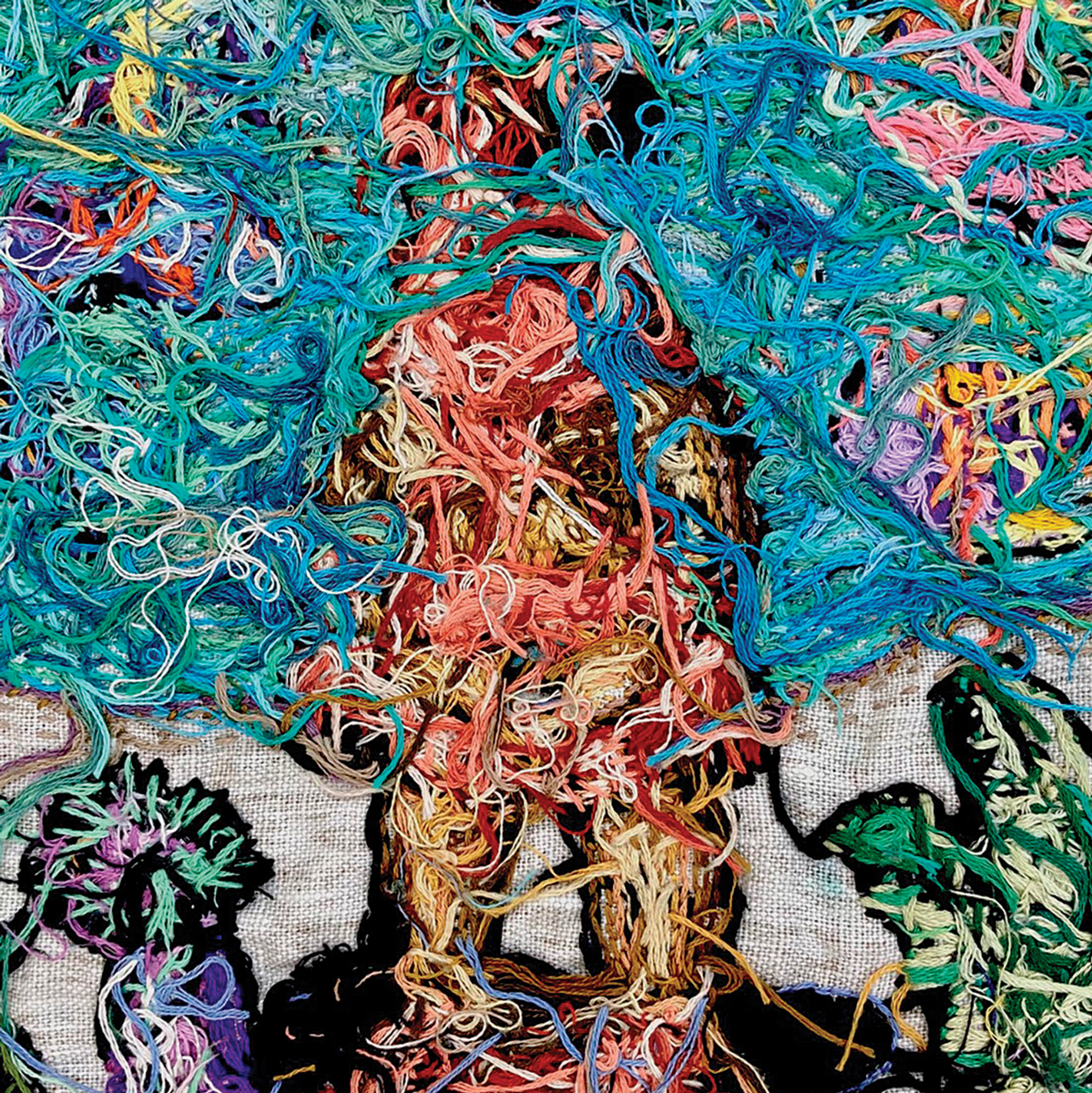
 |
 |
KC: Do you have any advice for those who are just starting out?
RC: If it’s something that gives you pleasure, keep doing it. And if you make a mistake, it’s not brain surgery. You can unhook it or start something new. It’s also not like I broke this diamond that I was cutting.
It’s just fabric, and it’s thread. It’s cheap. And go to YouTube, if you can’t figure something out.
KC: Would you have any advice for those who have been doing it for a long time?
RC: Oh my gosh, no. I’m using embroidery for my purposes, to draw. I’m not a student of embroidery. They’re the ones who could give advice to me.
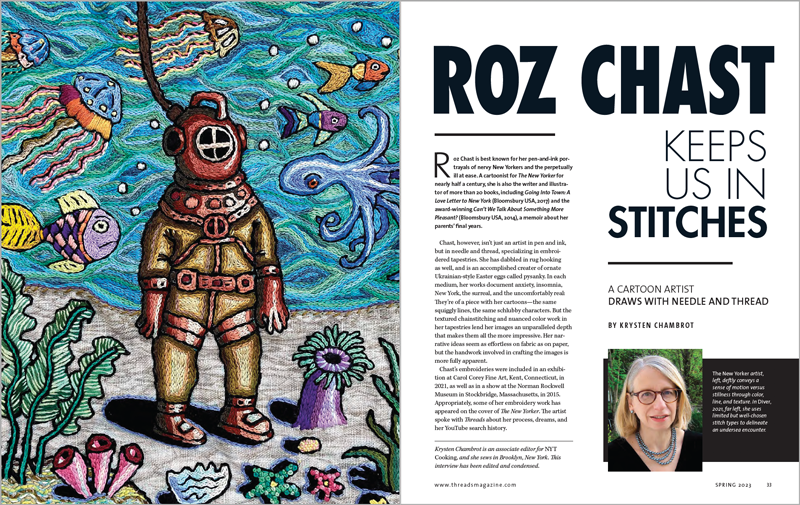 Krysten Chambrot is an associate editor for NYT Cooking, and she sews in Brooklyn, New York. This interview has been edited and condensed.
Krysten Chambrot is an associate editor for NYT Cooking, and she sews in Brooklyn, New York. This interview has been edited and condensed.
Photos: (Chast portrait) Bill Franzen; (all others) courtesy of Roz Chast and Carol Corey Fine Art, Kent, Connecticut.
View PDF






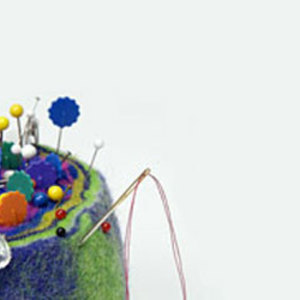

























OMG! As a long time fan of both Threads and Roz Chast, I am delighted with this article! I also learned to embroider as a child. In sixth grade I avoided ball sports on the playground by bringing my embroidery projects to recess. I haven’t embroidered much since, but may start up again . . .
What a delightful surprise to find this article--and the photos* are sumptuous! Years ago, I tried my hand at needlework, and the wrong side was so chaotic, I gave it up immediately. Chast's 'wrong' side makes me want to give it another try.
*Someone please congratulate the photographer--these photos just pop and embrace the eye. I haven't gotten my paper issue yet, so I'm anxious to compare its images to the ones above.
Recently, I was gifted Threads of Life by Clare Hunter. It is a remarkable story about people who have told their stories in embroidered form, quilts, and all manner of sewing. Hunter weaves her threads through stories, i.e., Mary Queen of Scots, WWII prisoners of war, countless tribes & peoples who have been displaced and kept their tales alive with needle and thread. Amazing book!